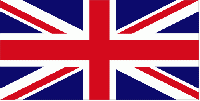Army & Navy CSL Co.
The Army and Navy Co-operative Society Ltd. was a British company formed in 1871 by a group of army and navy officers. It was their intention to supply "articles of domestic consumption and general use to its members at the lowest numerative rates." Based on the model of other middle-class co-operatives, such as Civil Service Supply Association (Strand, London, 1864), the society issued tickets to its members in exchange for an annual subscription. Membership of The Stores, as it became known, was open only to those in the higher ranks of the armed forces and the widows of officers, as well as the representatives of regimental messes and canteens.
In later years membership was expanded to a wider audience and tickets were issued free of charge after 1922. The benefits of membership included a dividend from the profits of the business and the free delivery of goods.
History
The first store opened on 15 February 1872 at 105 Victoria Street, in London. At the end of 1873 a gun department was established. By the end of the century the Society was issuing an voluminous annual illustrated price list nnd in 1901 opened branches in Bombay, Delhi, Calcutta and Karachi. Shortly thereafter, they introduced telephone ordering (one of the first companies of any sort to do so) and had reduced mail order prices.
In 1934 the company’s official name became the Army and Navy Store Ltd and in 1973 Army and Navy Stores was taken over by House of Fraser. House of Fraser, in turn, was acquired by the Icelandic investment company, Baugur, in late 2006.
Dating firearms
Most significantly to firearms enthusiasts, for several decades the Army & Navy CSL was a major outfitter and supplier of arms and other gear for military officers, diplomats, and government employees bound for the colonies. The University of Glasgow mantains the records of the company and, for a fee, can often tell you exactly who bought a firearm and when. This can be especially useful for collectors who wish more information on a particular firearm's history. It can also be of great assistance in positively establishing the antique status of a particular gun (pre-1899 in the US; pre-1898 in Canada, for example), particularly late 19th century British revolvers.

